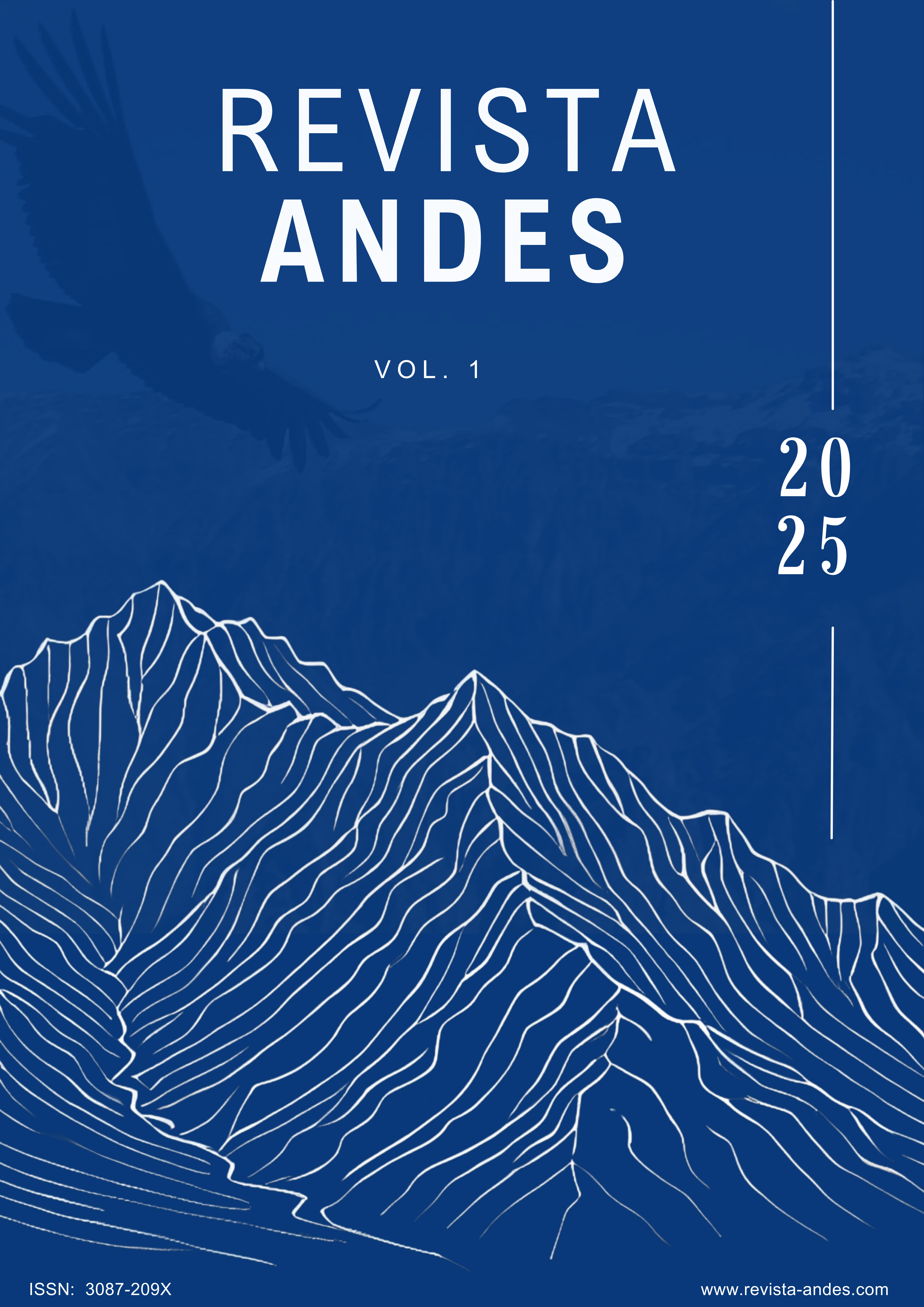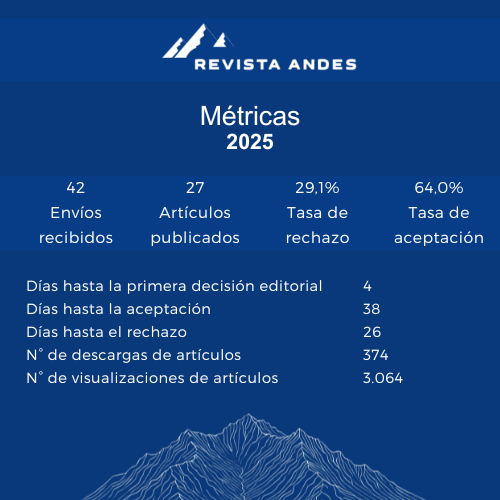Epidemiological update: Hospital discharge rate for Guillain-Barré syndrome between 2020 and 2023 in Chile
DOI:
https://doi.org/10.5281/zenodo.15420117Keywords:
Síndrome de Guillain-Barre, Chile, Hospitalización, NeurologíaAbstract
Introduction: Guillain-Barré Syndrome (GBS) is an acute neurological disease that affects the peripheral nervous system and is commonly triggered by infections such as those caused by the Zika virus or Campylobacter jejuni. It is estimated that approximately 100,000 new cases occur annually, primarily affecting adults. Countries like Chile and Bangladesh have reported particularly high incidence rates, possibly due to the circulation of endemic infectious agents. Objective: To determine the Hospital Discharge Rate (HDR) due to Guillain-Barré Syndrome in Chile between 2020 and 2023. Methodology: A descriptive, cross-sectional, ecological observational study was conducted using data from the Department of Health Statistics and Information and the National Institute of Statistics. Results: A total of 2,214 cases of Guillain-Barré Syndrome were recorded, with a higher burden among men (average HDR of 3.71 per 100,000 inhabitants) compared to women (average HDR of 2.61). The average length of hospital stay was 23.90 days. Discussion: In 2022, an increase in the HDR and the highest average hospital stay were observed, possibly related to the reallocation of hospital beds during the COVID-19 health emergency and the aftereffects of the pandemic period. Conclusion: The 65–79 age group was the most susceptible to hospitalization and had the longest average hospital stay (5.91 days) between 2020 and 2023. Men showed the highest HDR in all years studied. The findings highlight the need to update clinical guidelines and strengthen preventive strategies against potential triggering agents of GBS.
Downloads
References
[1] Hernández K. Impacto de la terapia nutricia en Síndrome de Guillain-Barré. Instituto de Salud Pública [Internet]. 2017 [citado el 29 de abril de 2025]. Disponible en: http://catalogo.espm.mx/files/tes/55495.pdf
[2] CDC. Guillain-Barré Syndrome. U.S Centers for Disease Control and Prevention [Internet]. 2021 [citado el 29 de abril de 2025]. Disponible en: https://www.cdc.gov/campylobacter/signs-symptoms/guillain-barre-syndrome.html
[3] Bellanti R, Rinaldi S. Guillain-Barré síndrome: a comprehensive review. European Journal of Neurology [Internet]. 2024 [citado el 29 de abril de 2025]. Disponible en: https://doi.org/10.1111/ene.16365
[4] Nakano Y, Kanda T. Pathology of Guillain-Barré síndrome. Clinical and Experimental Neuroinmunology [Internet]. 2016 [citado el 21 de abril de 2025]. Disponible en: https://doi.org/10.1111/cen3.12342
[5] Kaida K. Guillain-Barré Syndrome. Myelin [Internet]. 2019 [citado el 21 de abril de 2025]. Disponible en: https://doi.org/10.1007/978-981-32-9636-7_20
[6] Prineas JW. Pathology of the Guillain-Barré syndrome. Annals of Neurology [Internet]. 1981 [citado el 11 de abril de 2025]. Disponible en: https://doi.org/10.1002/ana.410090704
[7] Rahman R, Bauthman M, Alanazi A, Alsillah N, Alanazi Z, Almuhaysin M, Almutairi R, Binobaid K, Alharthi Y, Bawareth R, Alrawili O. Guillain-Barré syndrome: pathophysiology, etiology, causes, and treatment. International Journal of Community Medicine and Public Health [Internet]. 2021 [citado el 11 de abril de 2025]. Disponible en: https://doi.org/10.18203/2394-6040.ijcmph20212324
[8] Leonhard S, Cornblath D, Endtz H, Sejvar J, Jacobs B. Guillain-Barré syndrome in times of pandemics. Jorunal of Neurology, Neurosurgery & Psychiatry [Internet]. 2020 [citado el 11 de abril de 2025]. Disponible en: https://doi.org/10.1136/jnnp-2020-324230
[9] Vallejo R, Cantor JF, Arce L. Síndrome de Guillain-Barré asociado a COVID-19: diagnóstico, tratamiento y rehabilitación. Neurology Perspectives [Internet]. 2021 [citado el 11 de abril de 2025]. Disponible en: https://doi.org/10.1016/j.neurop.2021.03.003
[10] Vargas F. Recambio plasmático en síndrome de Guillain-Barré. Revista Mexicana de Medicina Transfusional [Internet]. 2024 [citado el 29 de abril de 2025]. Disponible en: https://www.medigraphic.com/cgi-bin/new/resumen.cgi?IDARTICULO=117580
[11] Rivera-Lizárraga DA, Jiménez-González JC, Solís-Gamboa MI, Espinosa-Padilla SE, Gutiérrez-Hernández JA, Yamazaki-Nakashimada MA, Rivas-Larrauri FE, Bustamente-Ogando JC. Guillain-Barré syndrome as initial manifestation of Systemic Lupus Erythematosus: case report. Alergia, Asma e Inmunología Pediátricas [Internet]. 2024 [citado el 29 de abril de 2025]. Disponible en: https://www.medigraphic.com/cgi-bin/new/resumenI.cgi?IDARTICULO=116267
[12] Finsterer J. Triggers of Guillain-Barré Syndrome: Campylobacter jejuni Predominates. Neurology & Neurophysiology Center [Internet]. 2022 [citado el 29 de abril de 2025]. Disponible en: https://doi.org/10.3390/ijms232214222
[13] Mayo Clinic. Síndrome de Guillain-Barré. MC [Internet]. 2024 [citado el 11 de abril de 2025]. Disponible en: https://www.mayoclinic.org/es/diseases-conditions/guillain-barre-syndrome/symptoms-causes/syc-20362793#:~:text=El%20s%C3%ADndrome%20de%20Guillain%2DBarré%20es%20raro%2C%20y%20la%20causa,como%20debilidad%2C%20entumecimiento%20o%20fatiga.
[14] Gomez F, Mehra A, Ensrud E, Diedrich D, Laudanski K. COVID-19: a modern trigger for Guillain-Barre syndrome, myasthenia gravis, and small fiber neuropathy. Frontiers in Neuroscience [Internet]. 2023 [citado el 29 de abril de 2025]. Disponible en: https://doi.org/10.3389/fnins.2023.1198327
[15] Muñoz S, Año G, Galleguillos M, Barra L, Hernández M, Benítez B. Análisis epidemiológico de la mortalidad por Enfermedad Isquémica Cardíaca en Chile entre 2000 y 2021. Revista Confluencia [Internet]. 2025 [citado el 02 de mayo de 2025]. Disponible en: https://revistas.udd.cl/index.php/confluencia/article/view/1326
[16] Sosa-Hernández O, Sánchez-Cardoza S. Reporte de caso de síndrome de Guillain-Barré posterior a la vacuna COVID BNT162b2 mRNA. Vacunas [Internet]. 2022 [citado el 11 de abril de 2025]. Disponible en: https://doi.org/10.1016/j.vacun.2022.02.002
[17] Cea G, Jara P, Quevedo F. Características epidemiológicas del síndrome de Guillain-Barré en población chilena: estudio hospitalario en un período de 7 años. Revista Médica de Chile [Internet]. 2015 [citado el 02 de mayo de 2025]. Disponible en: http://dx.doi.org/10.4067/S0034-98872015000200005
[18] Canals B, Belloni C. Envejecimiento en Chile: Diagnóstico y Consulta Ciudadana. SENAMA [Internet]. 2022 [citado el 02 de mayo de 2025]. Disponible en: https://www.senama.gob.cl/storage/docs/LIBRO_-_Envejecimiento_en_Chile_-_Diagnostico_y_Consulta_Ciudadana_-web.pdf
[19] Tamayo E. Manejo de la inmunosenescencia desde la Enfermería. Universidad de Cantabria [Internet]. 2022 [citado el 29 de abril de 2025]. Disponible en: https://repositorio.unican.es/xmlui/handle/10902/25011
Downloads
Published
Issue
Section
License
Copyright (c) 2025 Revista Andes

This work is licensed under a Creative Commons Attribution 4.0 International License.














